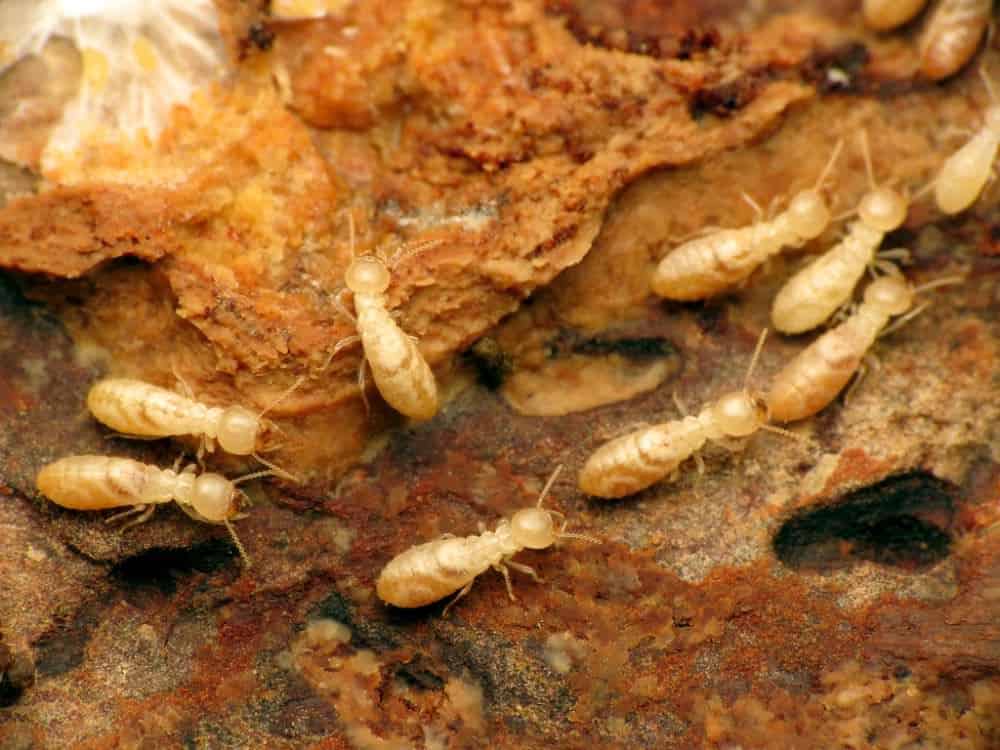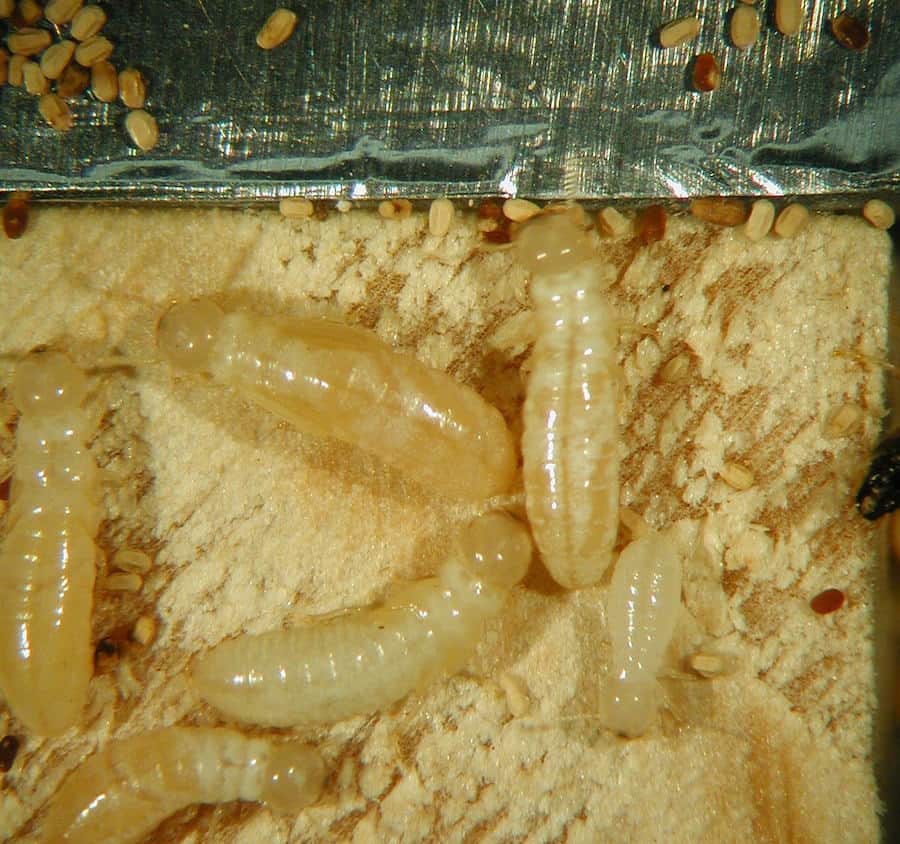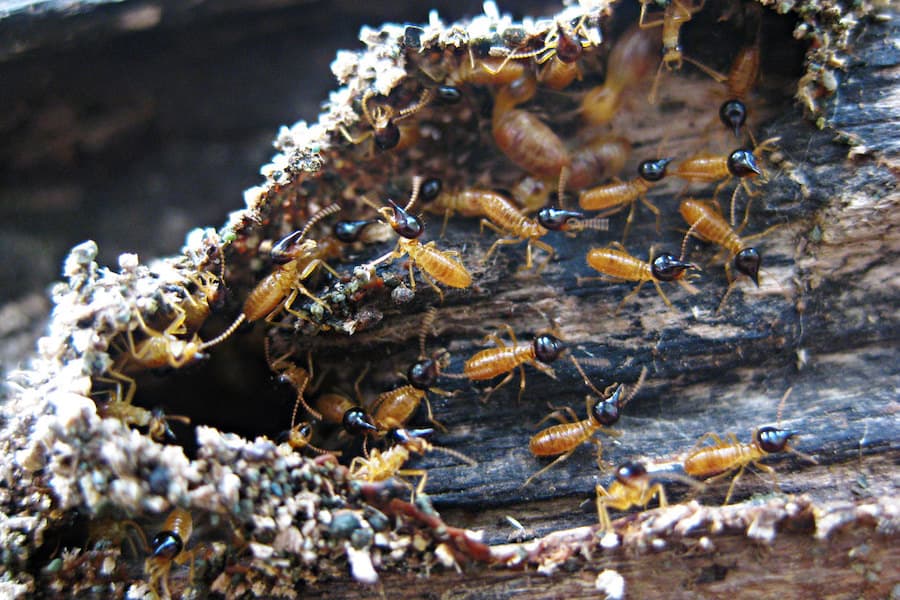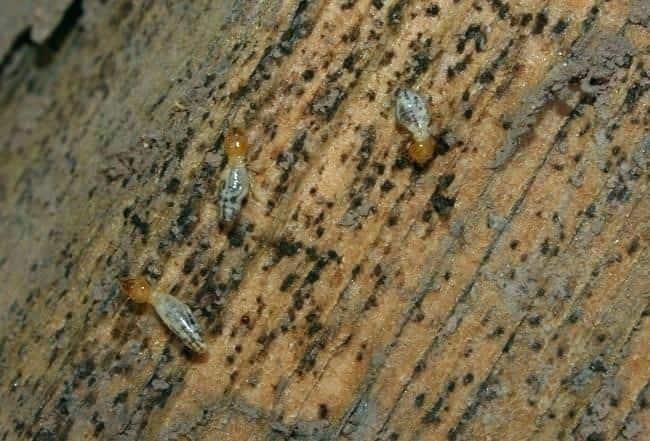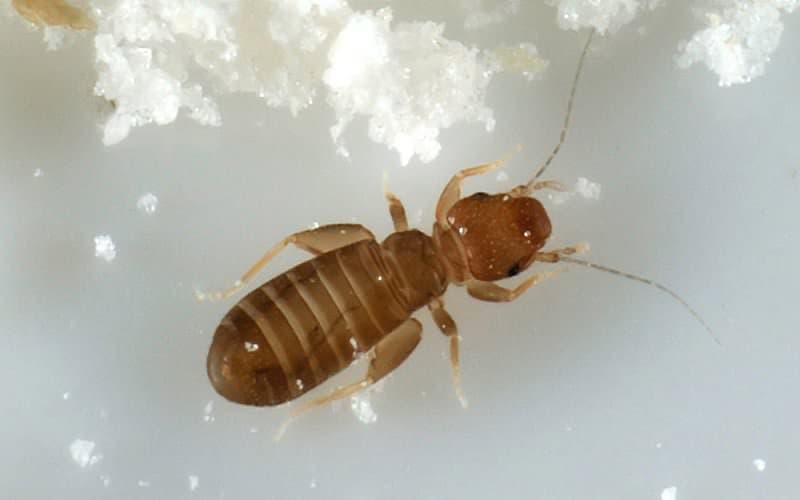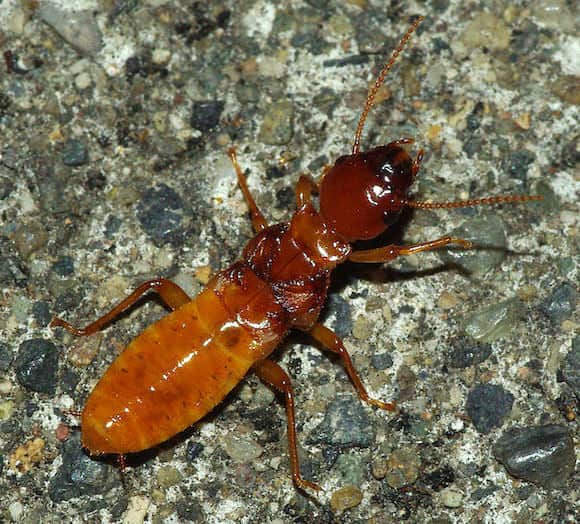Signs Of A Termite Infestation
Termites are a serious problem that can exist for a very long time without being detected. They work behind the surface, feeding on the wood of your house. Since they aren’t usually visible, by the time you find any termite signs, it is often too late. These bugs can increase quickly and cause a great deal of damage to the structure of your home.
When it comes to a termite infestation, it is extremely important to act fast, as you find any evidence of these creatures. Unfortunately, these undercover pests are notoriously difficult to detect. Knowing what to look for will help you to take action before it’s too late. Read on to know the signs, and also for helpful information on how to get rid of them.
Signs of Termites
When it comes to positively identifying a termite infestation, there are a number of clear signs. We will cover these in detail below so you know exactly what to look for. What if you realize that termites may be taking over your home? In that case, it’s best to consult a pest control specialist as soon as possible.
Professionals will be able to identify the scale of the problem, as well as possible ways to deal with it. Termites have a tendency to live and thrive unnoticed for long periods of time. That means they could have been damaging your house for years before you find them.
Many people don’t know they have termites until the damage is extensive. This then results in costly repairs to home and furniture, as well as eliminating the termites themselves.
Time is of the essence as soon as you spot any of the signs described below. The quicker you can deal with the problem, the better you can ensure that further damage isn’t being done.
Clicking
Listen carefully to your walls and door frames, if they are made of wood. This may sound crazy, but you might be able to hear termites moving in your walls. If you can hear a clicking sound coming from inside a wall, it is likely to be the soldier termites.
This sound is made as the soldier termites bump their large heads against the walls. The louder or clearer the clicking sound is, the more termites are likely to be on the other side of the wall. If you think you can hear a faint clicking sound, act fast before letting it get any louder.
Termite Droppings
Termite droppings are small black or dark brown flecks that are the consistency of sawdust or sand. These small flecks can build up into large numbers outside of a termite nest. If you notice growing collections of dark flecks around cracks, windows or door frames, you could have a termite infestation.
The presence of termite droppings, or frass as they are called, is a sign of that you have drywood termites. Drywood termites eject the excrement from their nest in order to keep it clean.
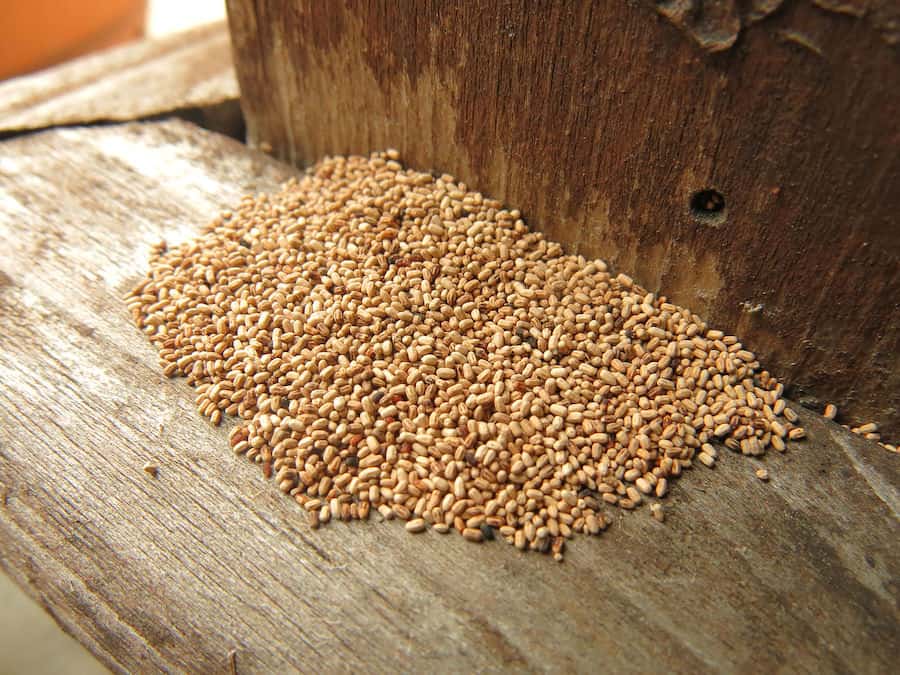
If you suspect you have some in your home, you should confirm that this is indeed termite frass. Once you’ve made a positive identification, it is best to get a professional involved as soon as possible.
It is important to point out that not all termites will leave this evidence. For example, subterranean termites use their droppings to make tunnels to keep their environment warm and moist. If you detect other signs but have no frass, or droppings, in your home, you could still have termites.
Swollen Door & Window Frames
As termites feed inside the wooden structures of our homes, they could be inside your window and door frames too. Subterranean termites thrive in a moist and damp environment, and use mud and their own droppings to help create this.
The warmth and humidity inside the wood causes this slight expansion. This change in size will make it difficult for you to open and close your doors properly. Have you noticed a swelling in your windows and doors? Are they no longer closing properly? These are possible signs that subterranean termites are feeding inside.
If you have noticed any changes to your frames and have no other clear water damage that could have caused it, call a professional.
Cracks & Crumbles
When termites feed on wood, this, in turn, causes the wood to weaken and crumble. Unexplained damage to door frames, window frames and floorboards can all be signs of termite damage. You may find the wood is significantly weaker and crumbles or breaks easily when touched. Little round holes can also be present.
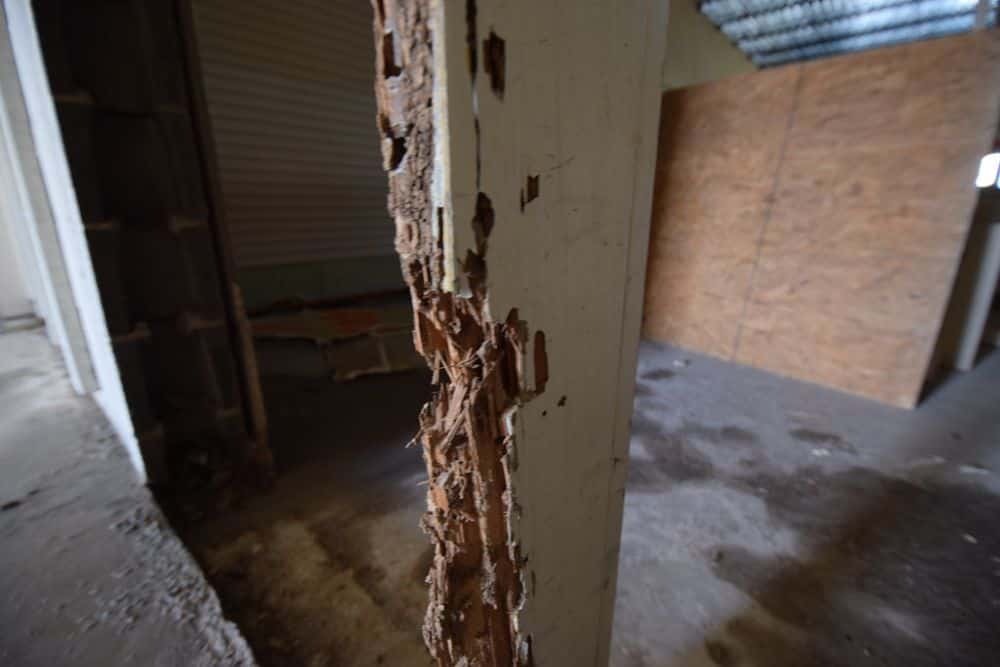
If this is the case, you may have a termite infestation in your home. Note that wood damage around window and door frames can actually compromise the structural integrity of the building. This can be quite dangerous and should be dealt with as soon as possible, to avoid any injuries.
Blistered Walls & Floors
Termite damage can often be mistaken for water damage. As termites work and feed inside your walls and floors, a certain amount of heat and humidity may build up. This change in temperature can cause bulges and blistering on your walls and floors.
This sign will be particularly clear on painted walls. Termites can cause the paint on your walls to bubble and peel for two different reasons. One might be the presence of subterranean termites creating a warm and humid environment behind the paint. Another reason could be that the wood behind the paint has been consumed. When enough of the wood has been eaten, there is literally nothing left to hold the paint.
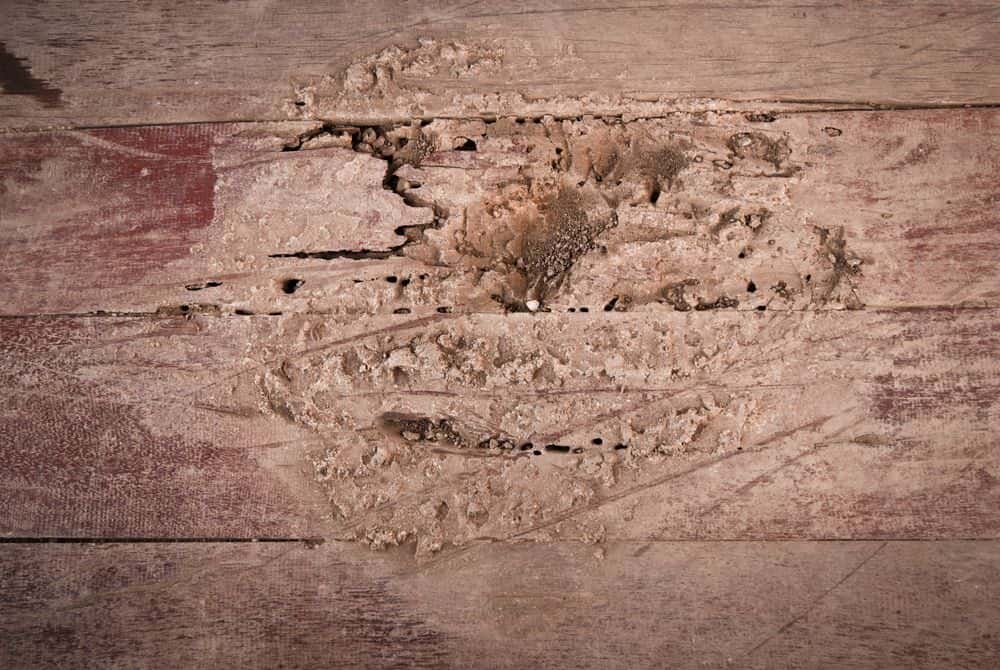
If you are experiencing this kind of damage in the home, careful inspection is needed. Water can also cause similar types of damage, so this sign alone may not indicate a termite problem. You may have a slow leak from a pipe under the floor or within the wall.
Either way, it is wise to sort this problem out, as water damage can itself be attractive to termites. If you feel you have damage that may be related to either water or termites—or both, my advice is to contact a professional. They can give you the correct diagnosis and treatment plan.
Swarmers & Wings
Once a year, a specific type of termite from the colony emerges in search of new nest locations. These termites are called swarmers and they can fly. If you spot these termites flying around your home, you could have a serious problem on your hands.
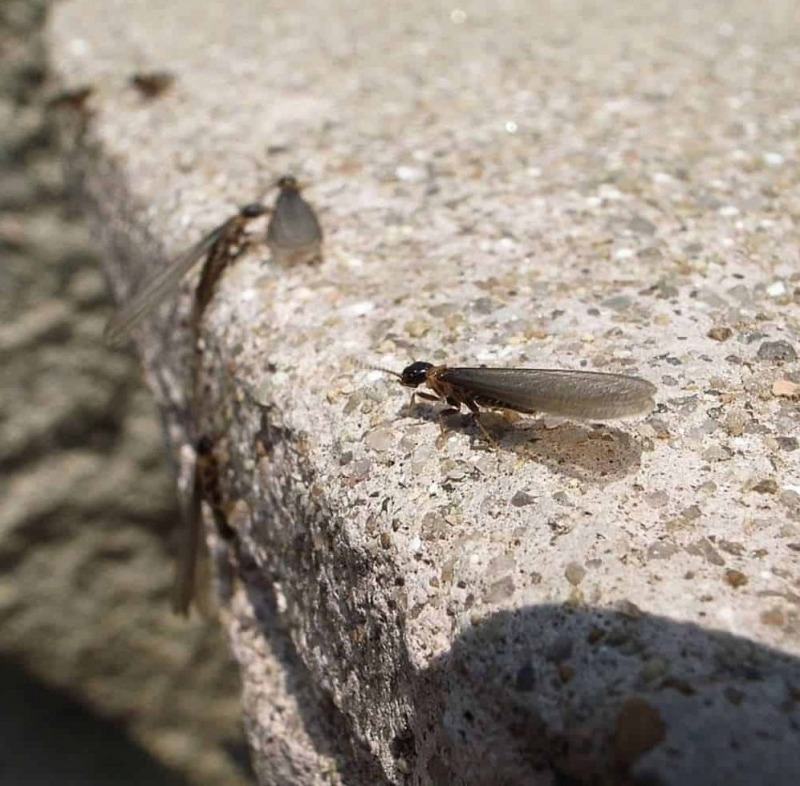
These termites are typically around ¼ to ⅜ of an inch in size. Unlike other termites in the colony, swarmers may be light or dark in color and have four wings.
You may find discarded wings around the house, particularly near the window frame. This is because swarmers shed their wings as soon as they have found a suitable spot to nest.
Hollow Sounding Wood
Termites feed on the insides of wood, usually unseen by the naked eye. While you won’t see them on the surface, there is another way you can identify their presence. If you suspect that there may be termites in your home, tap along the wood. Use a screwdriver handle or something similar and listen for a change in sound.
You should be able to hear a clear difference, which will indicate that the inside is hollow. You can further confirm this by breaking into the wood slightly. It won’t be too difficult to do this if the wood is already damaged inside.
Once inside the wood, you may physically see the termites, which is of course evidence in itself. Even if there are no termites to be seen, you may still see the tunnels that they created while feeding.
Mud Tubes
Termites are secretive creatures, working below the surface and out of sight (besides termite mounds). In order to remain unseen, subterranean termites create their own tunnels. This actually works in our favor. While we may not be able to see the termites themselves, we can more easily spot the tunnels.
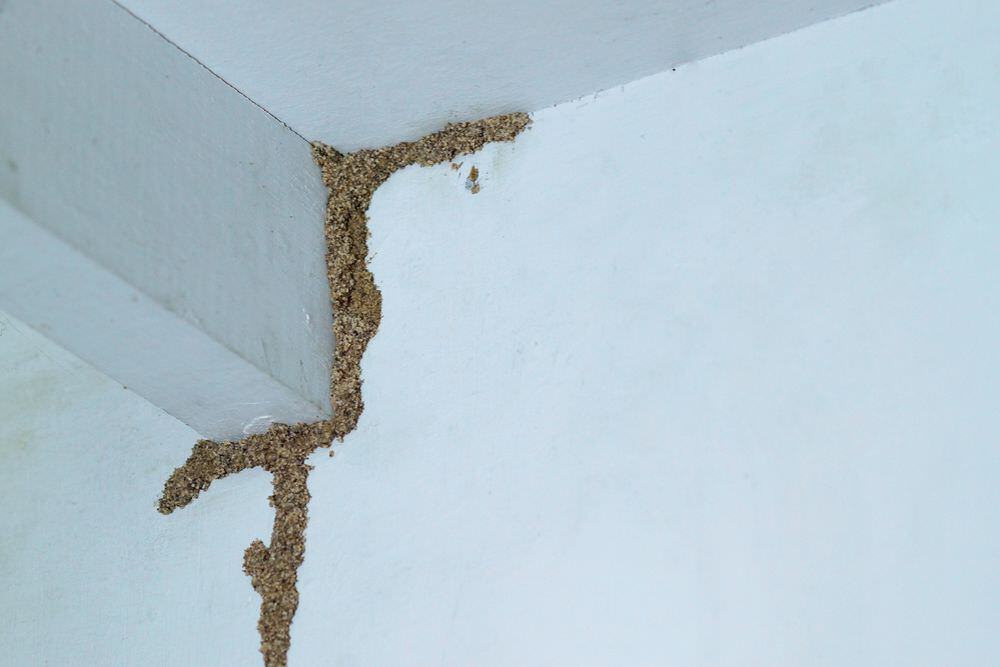
These series of tunnels (also called galleries) are created out of termite droppings as well as mud to maintain a moist and humid environment, and also protect them from predators. If you come across them, they are a clear warning sign that there is a colony of termites hard at work.
The tunnels are about the width of a pen or pencil and have a brown dusty color. You are most likely to spot them on walls or along cracks in the floorboards. They are more likely to be found in areas that are damp and moist, like basements or bathroom fittings.
What to Do If You Think You Have a Termite Infestation
Termites cause a great deal of damage, and this damage can seriously affect the structure and safety of your home. If termites get into the foundations and structural beams that support your house, you could be in serious danger. They will only continue to increase in numbers if you do not deal with them quickly.
There are a few things you should do as soon as you believe you may have a problem with termites.
Do Your Research
Are you worried that termites may have set up camp in your home? It is worth doing some research to confirm your suspicions. Since you are reading this article, you are already in the right place. Look for the signs that I have described, to ensure that you‘re on the right track.
If you have positively identified at least one of these signs, then it’s time to get help, and quickly. When it comes to termites, time really is of the essence.
Act Fast
Once you have identified signs that confirm your suspicions about termites, don’t wait and see if things get any worse. It really is best to err on the side of caution when it comes to dealing with a termite infestation.
The moment you have identified signs of termites, take immediate steps to deal with the problem. Termites are notoriously difficult to locate and treat independently, so a DIY solution is unlikely to be effective.
Consult a Professional
Calling a local pest control company is the way to go when it comes to successfully dealing with termites. Show the specialist the signs you have identified, and let them do their job. You need to be sure your problem is in fact termites, and not an infestation from similar-looking insects.
Depending on the nature of your problem, there are a number of ways that they could deal with the infestation. If your house is totally infested, you may have to move out temporarily and have the house fumigated. While this may be costly, if you do not deal with the issue, the termites will continue to thrive. The problems will then only get worse, requiring more extensive—and expensive—treatment later on.
Prevention & Pest Control Contracts
After eradicating a termite infestation, it is important to take steps to prevent it from happening again. Your pest control company may have a range of ongoing contract programs that involve regular inspections of your home. This will involve them checking a few times a year to ensure you are still termite free.
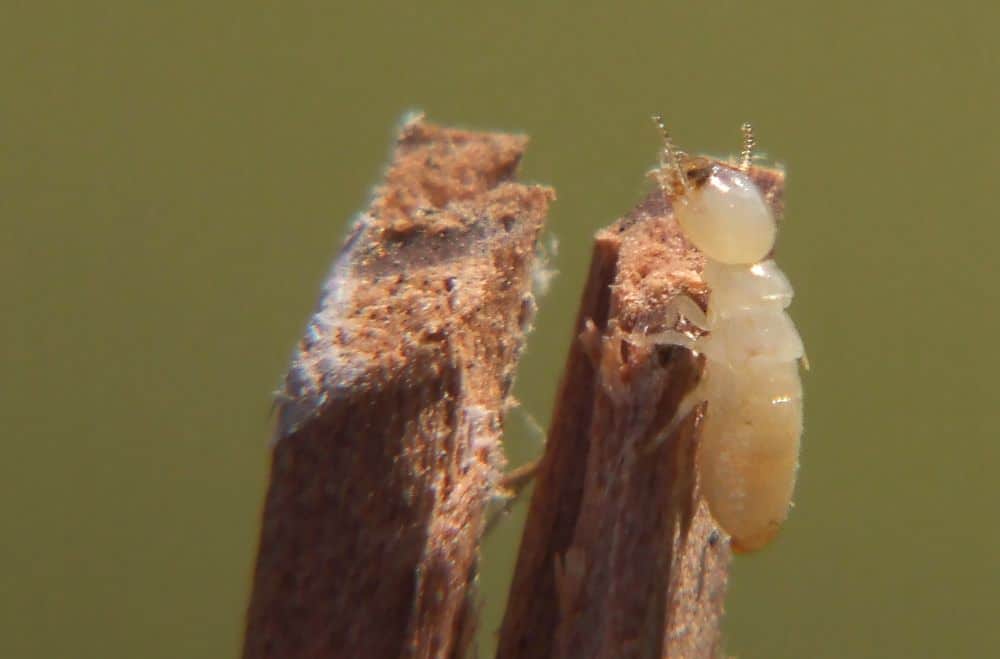
If any termites are found during this period, a contract may include the costs of re-treating this problem. Buying into a program like this is a great way to guarantee more protection against termites. The initial cost may not be appealing, but it will be less than paying for major structural repairs to a termite-damaged home.
Summary
A termite infestation can be costly and dangerous to your home and your health. It is important to take any signs seriously and act as quickly as you can to deal with the issue. When it comes to these destructive creatures, it’s better to be safe than sorry.
There are many termite signs to look for around your house. The more noticeable the signs are, the worse the problem is likely to be, as these pests are difficult to detect. I recommend having your home checked by professionals if you think you may have a termite infestation.

